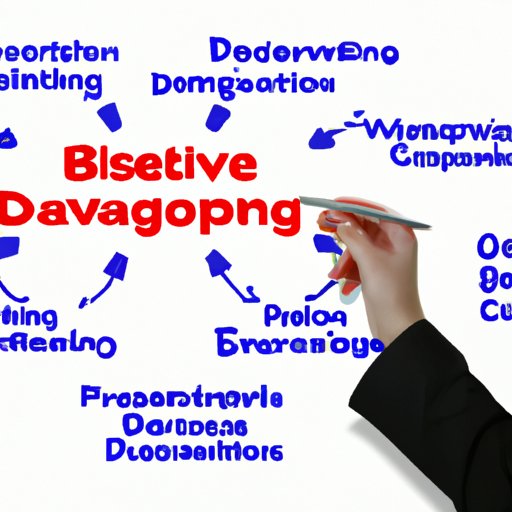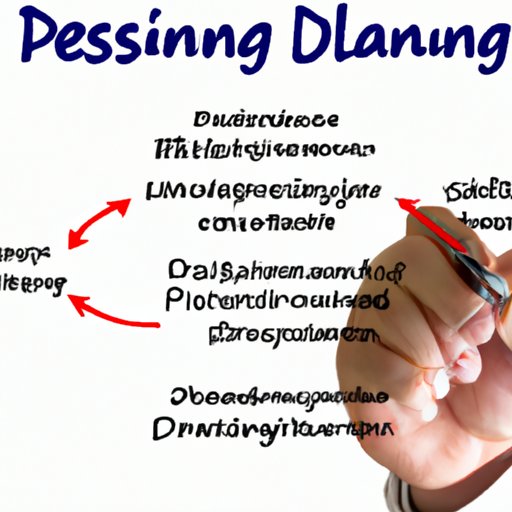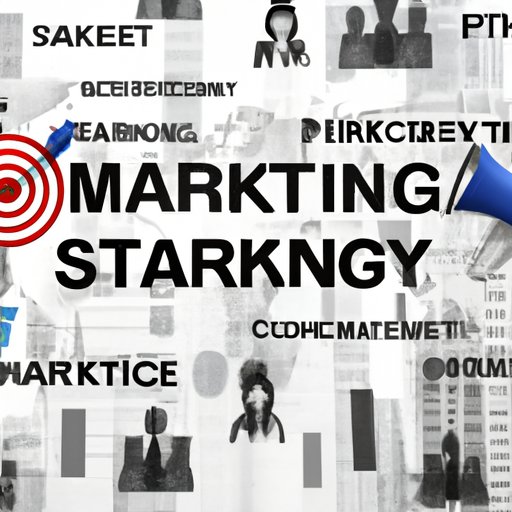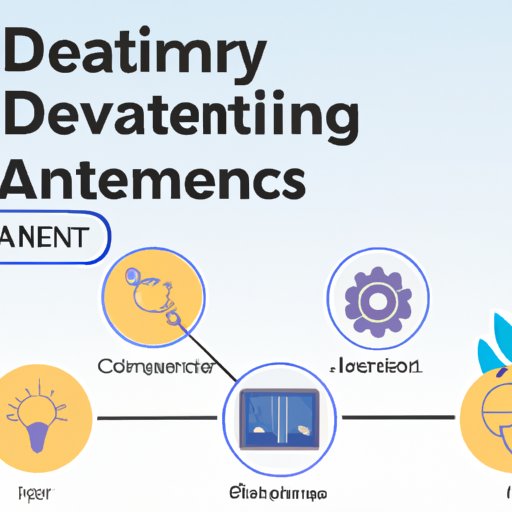Introduction
Business development strategy refers to the plans and processes that businesses use to grow their operations and increase profitability. It involves developing long-term goals and objectives for the business, conducting market research, and creating strategies to reach those goals. Businesses can use these strategies to identify new opportunities, target new markets, and increase their customer base.
This article will explore the basics of business development strategy, as well as its benefits. We’ll look at how to craft a successful business development plan, analyze your market, develop effective strategies for growth, and utilize technology to boost your strategy. We’ll also discuss how to measure the impact of your strategy and stay up to date with industry trends and best practices.

Exploring the Basics of Business Development Strategy
Business development strategy is an essential part of any business’s growth plan. By having a clear plan in place, businesses can focus on areas where they can improve and identify new opportunities for growth. It also helps businesses to set achievable goals and objectives, which can help them track their progress.
When crafting a business development strategy, it’s important to consider the current state of the business and its objectives. This includes understanding the competitive landscape, identifying potential customers, and evaluating the current marketing efforts. Once these factors have been identified, businesses can then create a plan to reach their goals.

Crafting a Successful Business Development Plan
The first step in creating a successful business development plan is to identify your goals and objectives. This will help you determine what areas of the business need to be improved and what new opportunities should be pursued. Once your goals and objectives are established, you can then begin to conduct market research to better understand your industry and target audience.
Next, you’ll need to create an action plan. This plan should include specific tasks, timelines, and resources needed to reach your goals. It’s important to review this plan regularly to ensure that it’s still relevant and up to date with the latest industry trends. Finally, you’ll need to allocate resources to implement your plan and track progress towards achieving your goals.

Analyzing Your Market and Identifying Your Target Audience
Once you’ve created an action plan, you’ll need to analyze your market and identify your target audience. Understanding your ideal customer will help you create effective strategies for reaching them. You can use data from customer surveys, interviews, and focus groups to gain insight into their needs and wants.
In addition to understanding your target audience, you’ll also need to analyze the competitive landscape. This includes researching competitors’ products, services, pricing strategies, and marketing tactics. By understanding the competition, you can more effectively position your business to stand out in the marketplace.
Developing Effective Strategies for Growing Your Business
Once you’ve conducted market research and identified your target audience, you can begin to develop strategies for growing your business. The first step is to evaluate your current position. This includes assessing the strengths and weaknesses of your business and identifying areas for improvement. Once you’ve done this, you can then consider different strategies for growth, such as launching new products or services, expanding into new markets, or increasing your marketing efforts.
It’s important to remember that no two businesses are alike. What works for one company may not work for another. Therefore, it’s important to tailor your strategies to the unique needs of your business. Once you’ve decided on the best strategies for growth, you can then begin to implement them.
Utilizing Technology to Boost Your Business Development Strategy
Technology has revolutionized the way businesses operate and has made it easier than ever to develop and implement business development strategies. There are many tools available to help businesses automate mundane tasks, such as customer relationship management software, project management tools, and automated marketing solutions. In addition to automation tools, businesses can also leverage social media platforms to reach more customers and analyze data with analytics to make informed decisions.
Measuring the Impact of Your Business Development Strategy
To ensure that your business development strategy is effective, it’s important to measure its impact. You can do this by setting benchmarks for evaluation and utilizing key performance indicators (KPIs). These KPIs should be tailored to your specific business goals and objectives. By tracking these metrics, you can measure the success of your strategies and make adjustments as needed.

Staying Up To Date With Industry Trends And Best Practices
It’s also important to stay up to date with industry trends and best practices to ensure that your business development strategy remains effective. This means identifying and monitoring relevant trends, as well as adapting your strategies based on changes in the marketplace. By doing so, you can ensure that your business is taking advantage of the latest opportunities to grow and remain competitive.
Conclusion
Business development strategy is an essential part of any business’s growth plan. It involves understanding the current state of the business, setting goals and objectives, conducting market research, and creating strategies for growth. Additionally, businesses can utilize technology to boost their strategy and measure the impact of their efforts. Finally, it’s important to stay up to date with industry trends and best practices to ensure that your strategy remains effective.
By following the steps outlined in this article, you can create a successful business development strategy for your business. With the right plan in place, you can reach your goals and maximize your potential for growth.
(Note: Is this article not meeting your expectations? Do you have knowledge or insights to share? Unlock new opportunities and expand your reach by joining our authors team. Click Registration to join us and share your expertise with our readers.)
